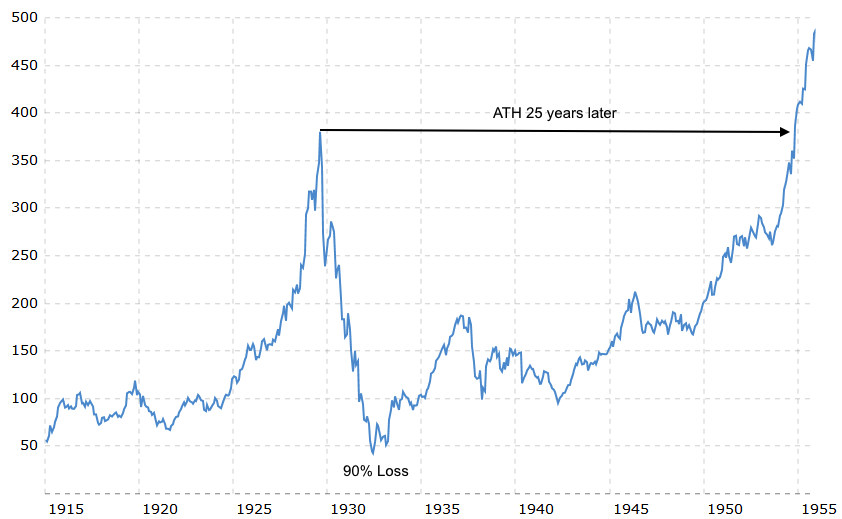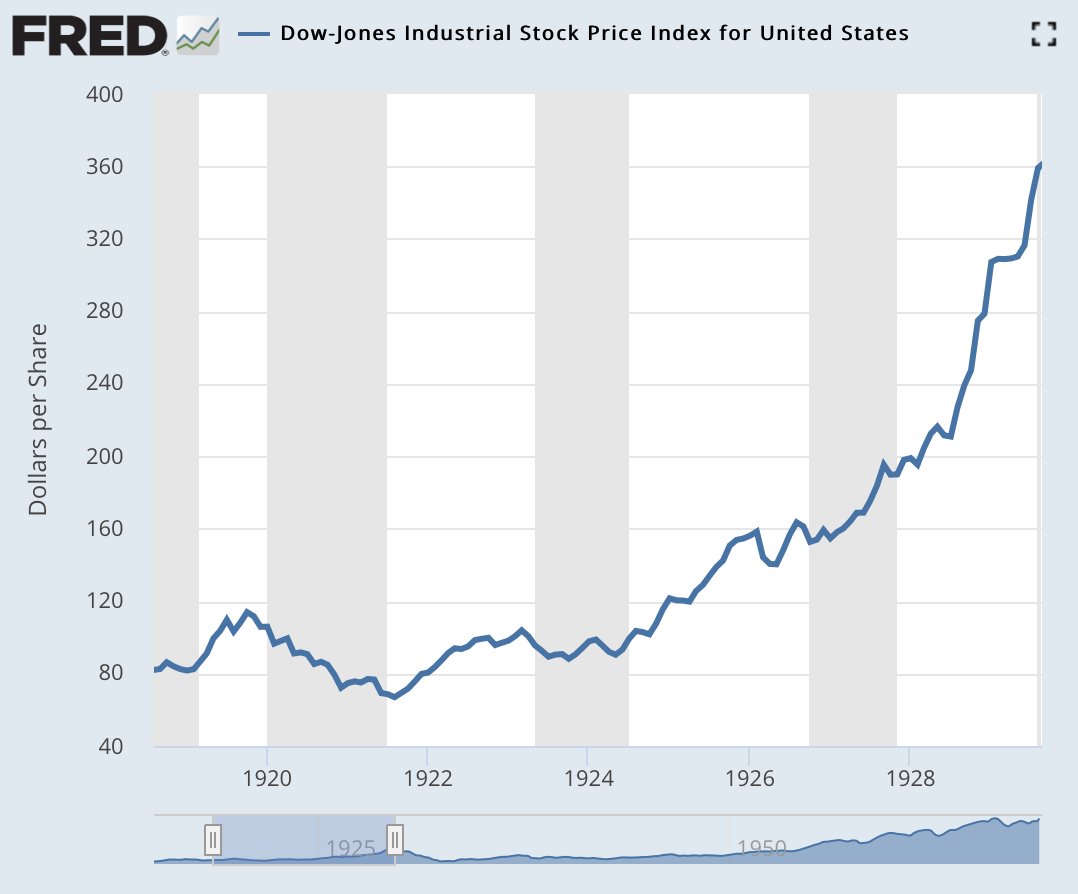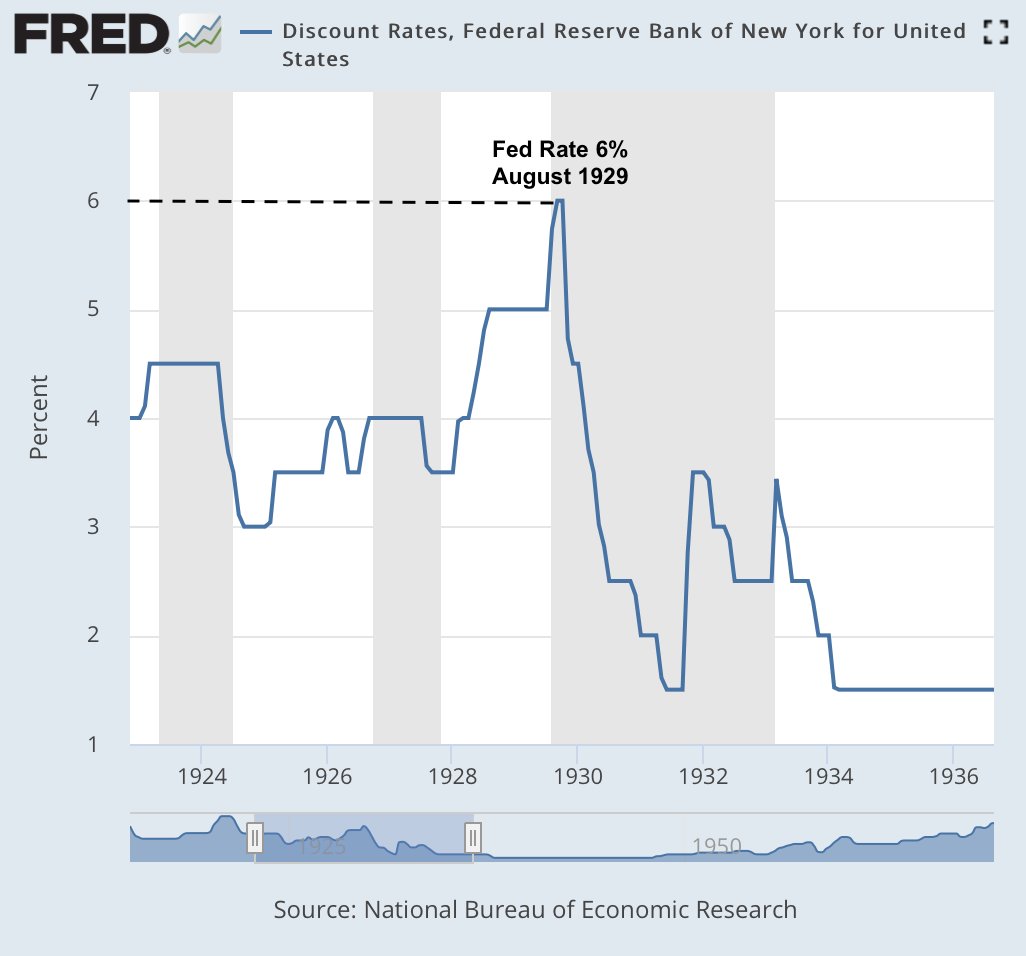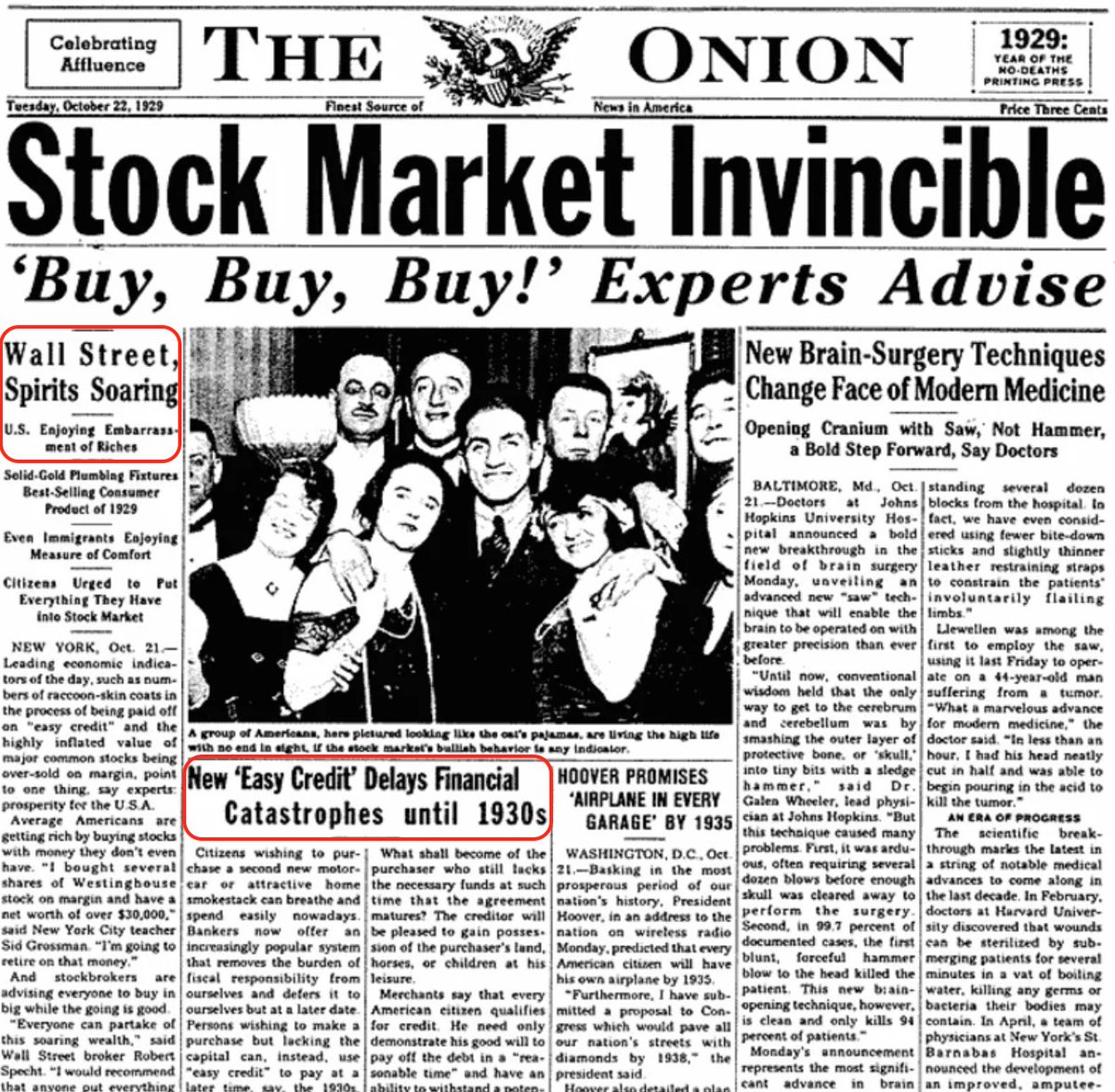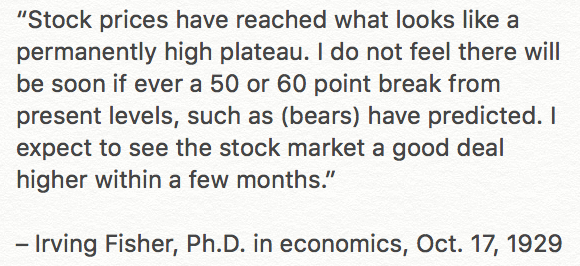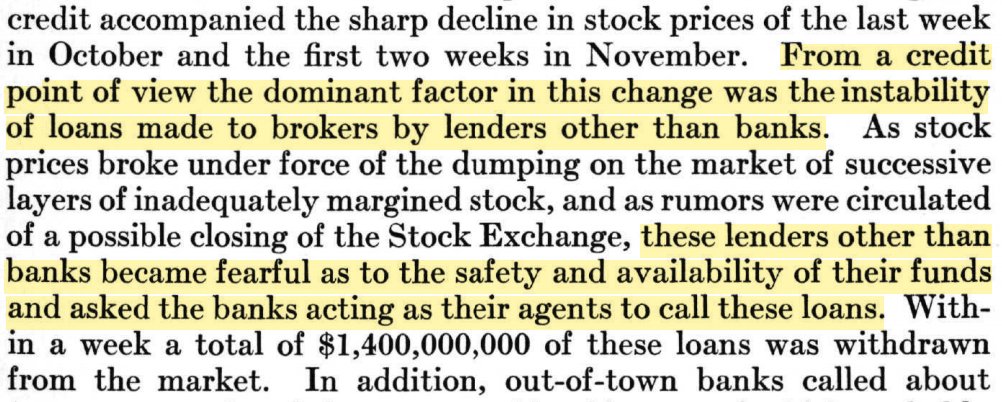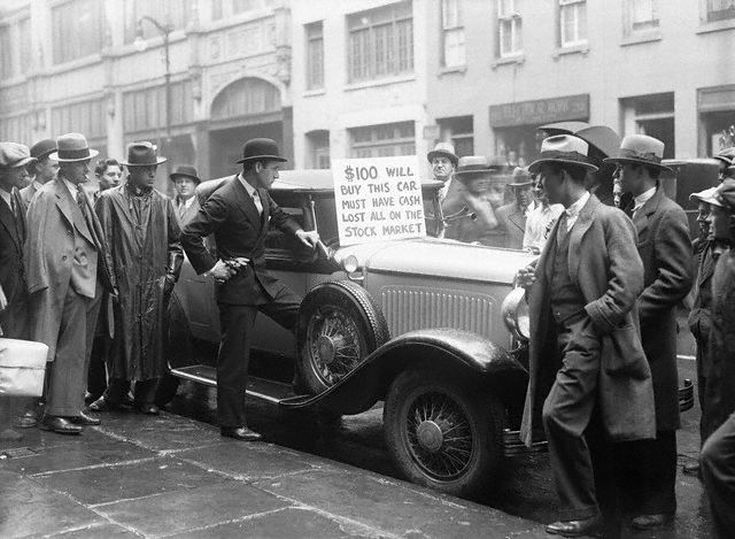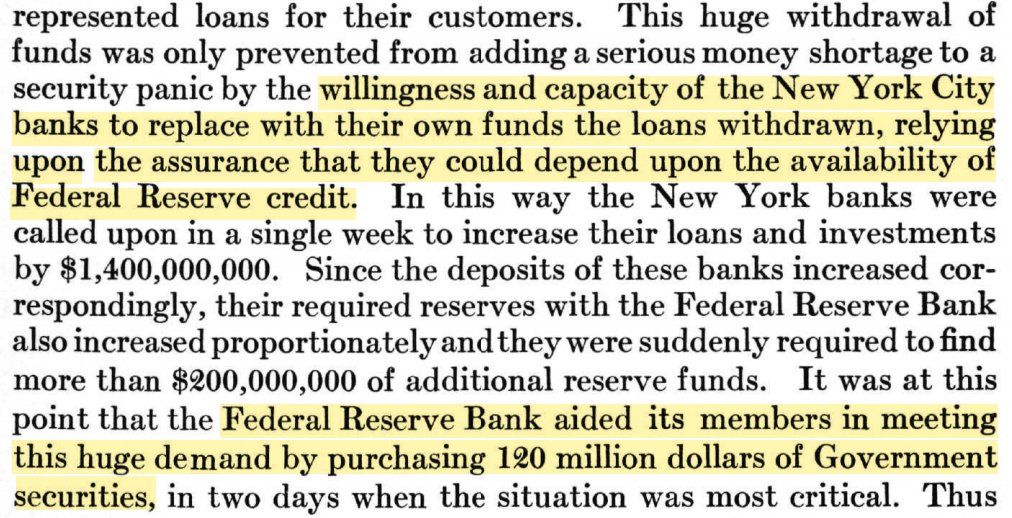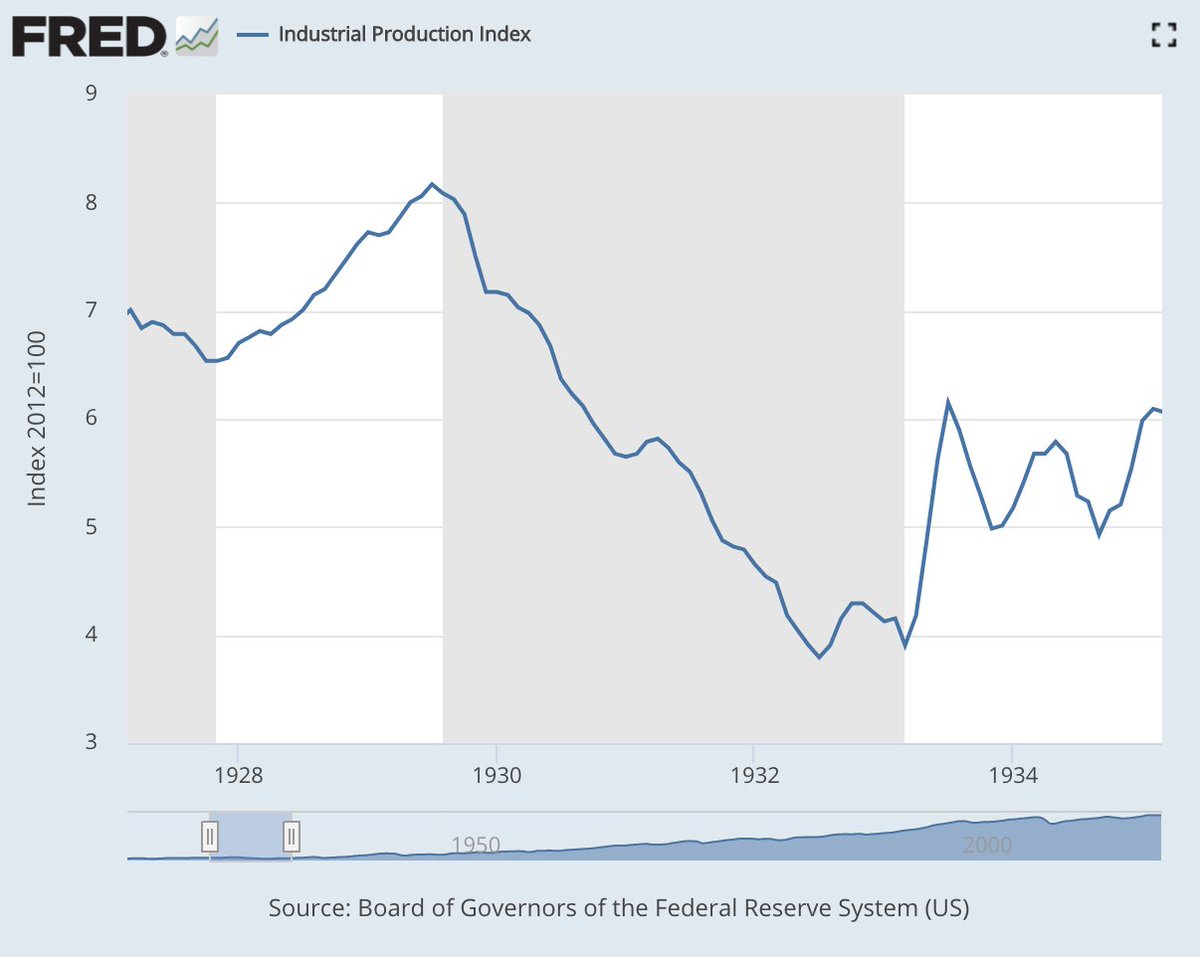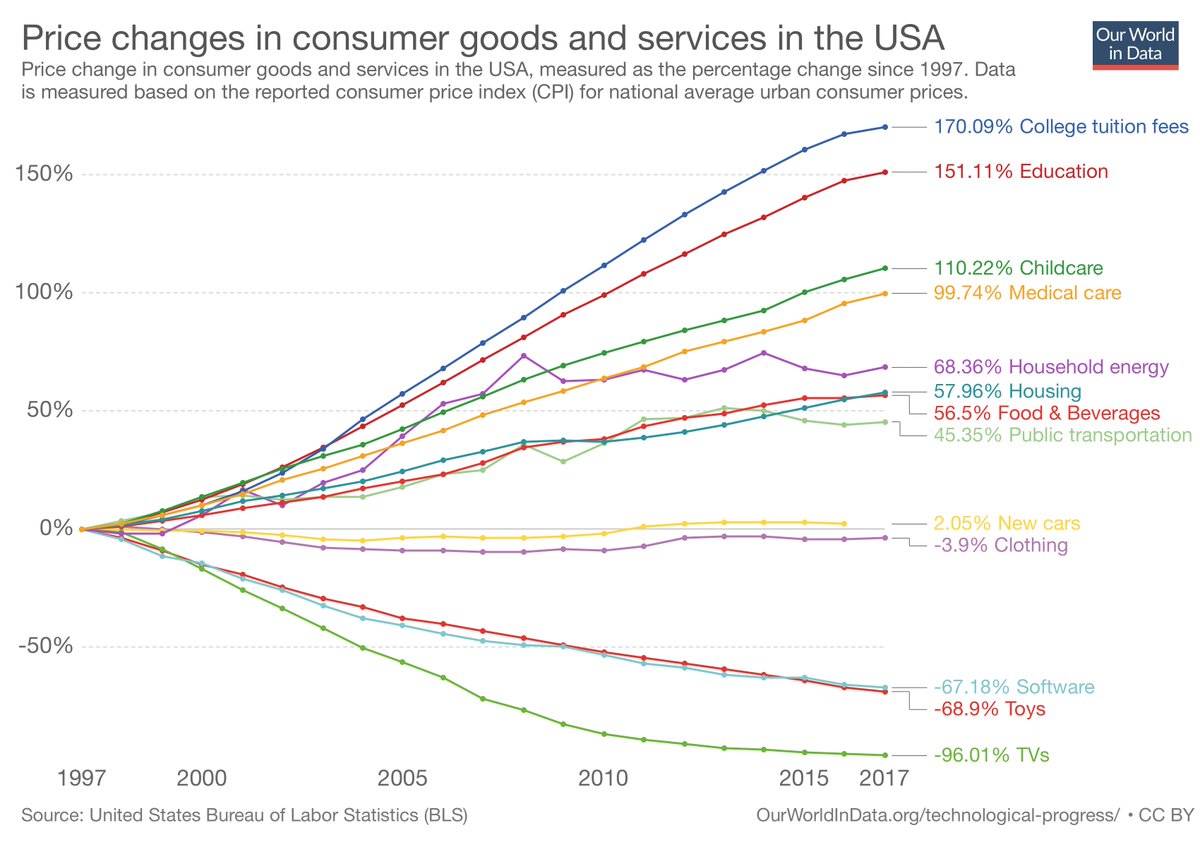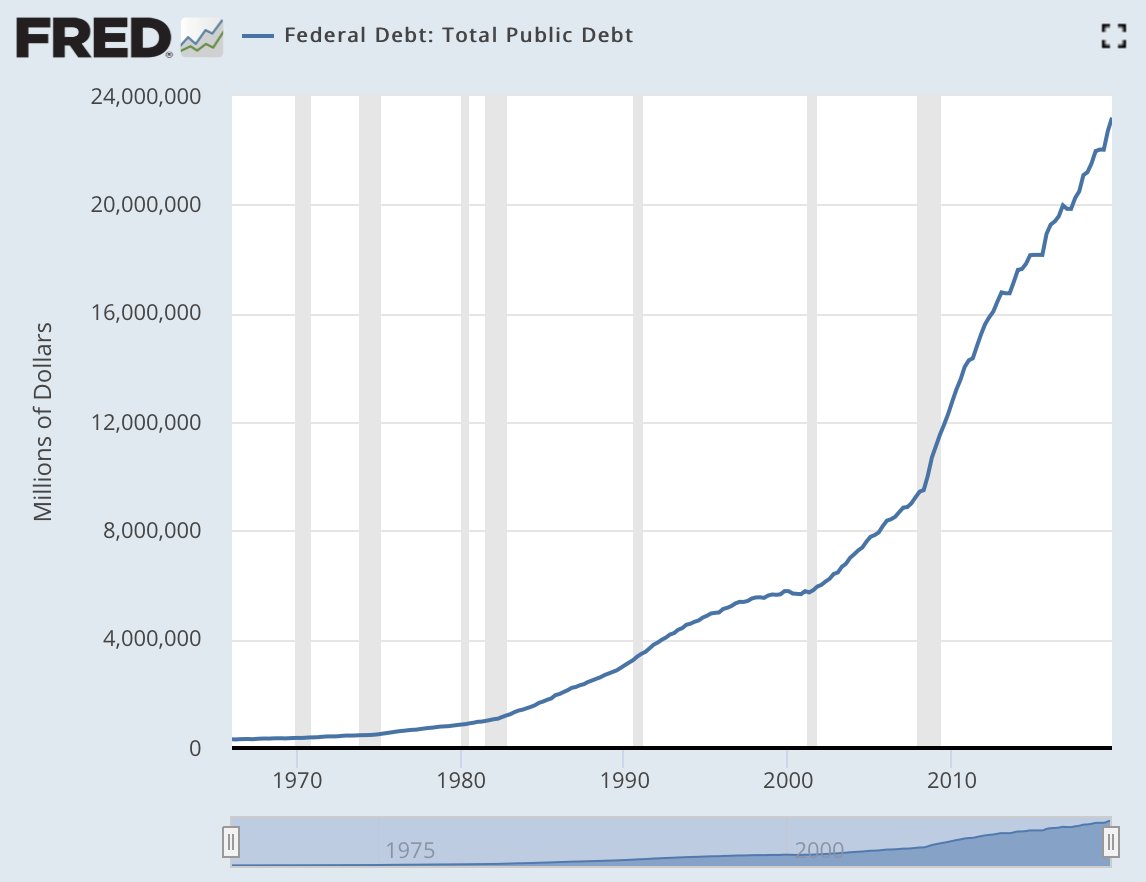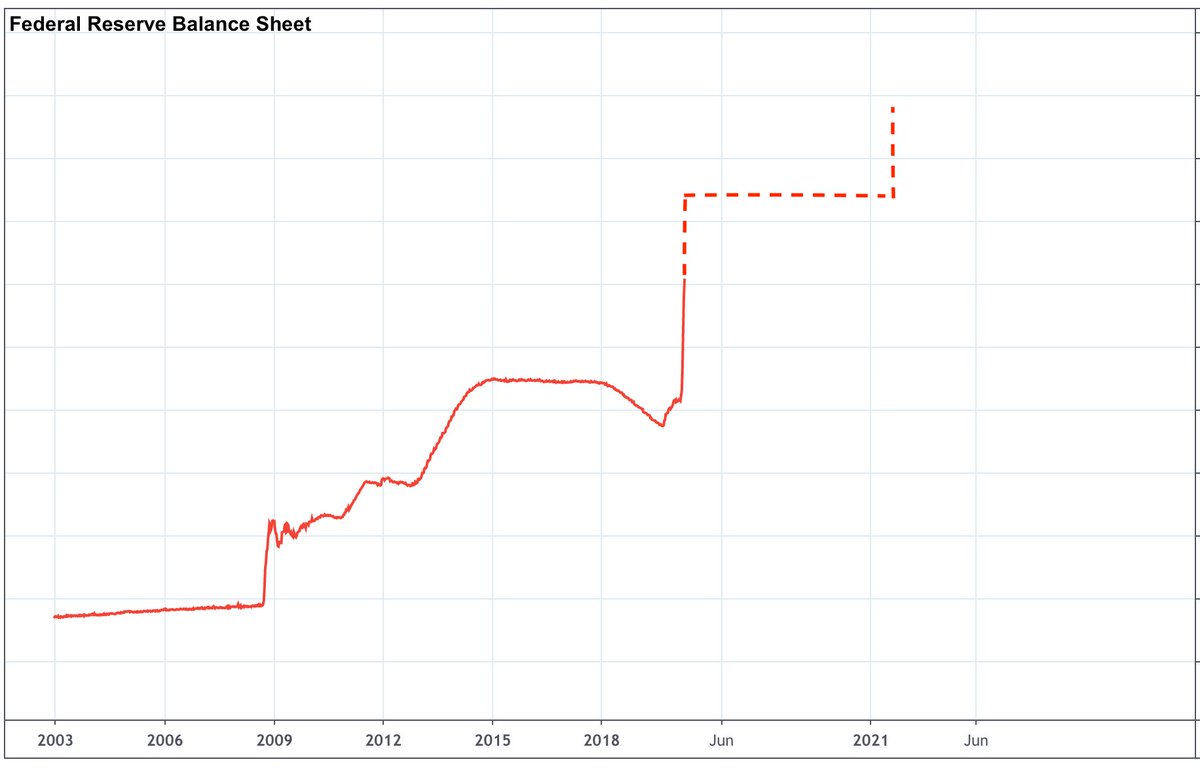0/End of a Cycle
Over the last 11 years a debt fueled speculative economy with multiple asset bubbles has been primed for correction. Will this be remembered as the Great Crash of 2020? This cycle shares many characteristics with the 1920s and its 1929 crash. A mega thread https://abs.twimg.com/emoji/v2/... draggable="false" alt="⤵️" title="Arrow pointing rightwards then curving downwards" aria-label="Emoji: Arrow pointing rightwards then curving downwards">
https://abs.twimg.com/emoji/v2/... draggable="false" alt="⤵️" title="Arrow pointing rightwards then curving downwards" aria-label="Emoji: Arrow pointing rightwards then curving downwards">
Over the last 11 years a debt fueled speculative economy with multiple asset bubbles has been primed for correction. Will this be remembered as the Great Crash of 2020? This cycle shares many characteristics with the 1920s and its 1929 crash. A mega thread
1/October 29, 1929. The roaring 20’s come to an abrupt end. The Dow crashed beginning a long slide down that bottommed in 1932 after losing 90% of its value and did not recover its previous ATH until 1954.
2/It was an era of prosperity. Post WW1 America became an ascendant world power. Like today, industry and technological innovation boomed. The arts, music and urban life-style prospered. Taxes were low. Consumerism took center stage. Credit was easy.
3/The 20’s marked nascent financialization of the economy. A stock market boom drew speculative investors from all walks of life. Leverage in the form of loans and margin accounts powered the market to unheard of highs. Everybody was making money!
4/The Dow grew from 73 to 381 points by Sept 1929 adding billions to its market capitalization. Retail investors were drawn to this seemingly easy, instant wealth.
5/Get rich quick schemes, shell company stocks, coupon investments, banks using deposits to buy stocks and an aura of confidence worked in tandem. Indeed, the 20’s gave birth to the original Ponzi scheme. https://www.history.com/news/how-did-the-ponzi-scheme-get-its-name">https://www.history.com/news/how-...
6/Early 1929, signs of weakness broke through the facade and the Dow saw its bull market threatened but powered on despite the Fed’s attempt to slow it down with QT: a series of discount rate increases (up to 6% on Aug 8, 1929) and a contraction in the monetary base.
7/Then as now, the 1920& #39;s saw huge gaps in wealth and weakness in personal savings. 80% of Americans had no savings and many were living paycheck to paycheck. The top 1% controlled vast swaths of economic output and owned the nation’s wealth.
10/The bubble popped. Over a few days, the Dow experienced a series of vertigo inducing drops and the country reeled. Perhaps it was overpriced public utility stocks facing regulatory oversight or a cascade of margin calls that created panic.
11/However, I suspect a primitive shadow banking system strained under the Fed’s quantitative tightening actions.
(src Federal Res, Dec. 1929)
(src Federal Res, Dec. 1929)
12/The crash had widespread repercussions that reached deep into America’s pocketbook. The flight to liquidity (cash) had begun.
13/The New York Federal Reserve sprang into action. It purchased government securities on the open market, expedited lending through its discount window, and lowered the discount rate. It assured commercial banks that it would supply the reserves they needed.
14/With the Fed as a backstop investors went on a shopping spree and bought stocks. The Down rallied regaining nearly 50% of the first wave of losses: a “Sucker’s Rally.”
15/This confidence game was not enough to suppress fear and stem losses. The crash frightened main street investors and consumers. Life savings and jobs were lost. How would they pay their bills? Many who had used debt to support their lifestyle feared bankruptcy.
16/In turn demand declined and entire industries began to furlough employees. At first temporarily but then as the reality of the economic collapse became clear, many permanently lost their livelihood. Industrial production collapsed.
17/Today we are in an eerily similar situation. Extreme misplaced confidence in markets coupled to unprecedented debt had fueled markets to all time highs and created a bubble economy in equities, bonds, real estate, emerging markets, art, wine, etc (h/t @thebubblebubble)
18/The actions & language of the great crash of 1929 echo in today’s market turmoil, volatility & the Fed’s response. We think of the Fed taking unprecedented steps yet they can be distilled to a singular mandate: The Fed is, was, & always will be the lender of last resort.
19/Are we at an abrupt end to this economic cycle? The unemployment numbers are staggering, economic output has cratered, there is severe demand side shock. And critically, consumer behavior may be altered for years.
20/Yet the markets are betting (for now) the world will return to business as usual shortly after the healthcare crisis has been contained. But the usual state of affairs was a debt ridden and overheated economy. It will take many more trillions of helicopter money.
21/The impact of furloughs, personal debt, & small business economic devastation will have orders of magnitude downstream effects & yet to be taken into account. SMBs employ 50% of US employees. Global supply chains have been disrupted. US econ. output has fallen nearly 30%.
22/Moreover, we have now been shown debt and central banks will continue to rule the markets going forward, will forever play a role in propping up equities, and bail out any corporation. The risk of moral hazard has been abandoned and has already set up the next crash.
23/If we sit at the precipice what do see across this great chasm? Extreme volatility in equities, sell offs forcing deflation across asset classes, more money printing, NIRPs and UBI. The Fed will attempt to re-inflate the bubble economy and its zombie companies.
24/It follows that inflation will rise but will be “suppressed” by redefining terms and again ignoring its effects on key sectors such as education, healthcare, and housing. Wages will stagnate and access to wealth creation will be further limited.
25/Moreover, central banks will need to double down once again to counter the natural momentum of business cycles & commit to perpetual and ever increasing QE. They are battling the inexorable and unstoppable deflationary forces of technology and globalization. More please!
27/This frank manipulation will lead to greater social divide & inequality. Already some are asking key questions about our money. If the Fed can print trillions for corporations why do we even pay taxes? What’s the value of our money if it can be arbitrarily created?
28/The Fed has become the market and any pretense of independence has evaporated. It has not only embarked upon currency debasement but erosion of USD’s status as the world’s reserve currency.
29/The size and speed of the Fed’s response hint at the deep concern the economy will slide into a depression. With little room to manipulate interest rates CBs around the world will use their balance sheets for maximal effect.
30/April 2019 the SF Fed Reserve telegraphed use of the Fed’s balance sheet for the next (this) financial crisis. https://twitter.com/ObiWanKenoBit/status/1122887797998702592?s=20">https://twitter.com/ObiWanKen...
31/Balance sheet tricks have expanded beyond US borders to include foreign central bank swap lines. Much like the shadow banking system that triggered a meltdown in 2008, opaque foreign markets deeply interconnected with the US economy are likely obscuring systemic threats.
32/Precise forecasting with a Fed willing to bail out the world is nigh impossible. But at some point debt will be due & a financial reckoning will reverberate across the world. Multiple bubbles have collapsed. There will be no “V-shaped” recovery.
Fin/This cycle has shown ample signs of ending. Do not allow the chaos of the crisis to diminish the need for self-sovereignty and defense against state sponsored monetary debasement. Buy #bitcoin  https://abs.twimg.com/hashflags... draggable="false" alt="">.
https://abs.twimg.com/hashflags... draggable="false" alt="">.

 Read on Twitter
Read on Twitter